Communities thrive when they celebrate the individuals who make them stronger—the volunteers who dedicate countless hours, the civic leaders who drive positive change, the educators who shape future generations, the first responders who serve selflessly, and the everyday citizens whose contributions elevate community life. Yet many communities struggle to consistently recognize these accomplishments in ways that create lasting impact, preserve institutional memory, and inspire continued excellence.
Community honors displays serve as powerful tools for addressing this challenge. Whether physical installations in civic buildings, digital touchscreen kiosks in community centers, or online recognition platforms accessible to all residents, effective honors displays transform acknowledgment from occasional ceremonies into permanent, visible celebrations that strengthen community identity and pride.
This guide addresses the unique challenges facing community organizations seeking to implement meaningful recognition programs—limited budgets, diverse stakeholder needs, technical considerations, content management requirements, and the imperative to create inclusive acknowledgment systems that serve entire communities rather than narrow constituencies.
Understanding Community Honors Displays
Community honors displays exist at the intersection of recognition, history preservation, and civic engagement, serving multiple strategic purposes beyond simple acknowledgment.
The Role of Public Recognition in Community Building
Public recognition creates measurable impacts on community health and vitality. When communities consistently celebrate achievement, they communicate shared values while providing role models that inspire similar contribution by others.
Research on civic engagement demonstrates that visible recognition of community contribution correlates with higher volunteer participation rates, increased civic involvement, stronger community identity, and enhanced attraction of talented individuals who want to live where contributions matter. Recognition doesn’t simply reward past achievement—it catalyzes future contribution by demonstrating that communities notice and value residents who make differences.
Effective community honors displays make recognition permanent and accessible rather than limiting acknowledgment to ceremony attendees. Physical displays in high-traffic community spaces ensure daily visibility among residents going about ordinary activities. Digital platforms extend reach to those unable to visit physical locations while providing unlimited capacity for comprehensive documentation.

Types of Achievements Community Honors Displays Celebrate
Comprehensive community honors displays recognize diverse accomplishment categories ensuring various contribution types receive appropriate acknowledgment.
Civic Service and Volunteerism: Recognition of volunteer hours milestones, board and committee service, nonprofit leadership, community project completion, and sustained civic engagement honors the volunteers who form the backbone of thriving communities. Service recognition validates unpaid contribution while encouraging continued involvement.
Public Safety and Emergency Response: Acknowledgment of first responders, emergency management volunteers, disaster relief participants, public health workers, and others who serve during routine operations and crisis situations recognizes both everyday dedication and extraordinary response when communities face emergencies.
Educational Excellence: Celebration of teacher achievement, administrator leadership, student academic accomplishment, scholarship recipients, educational program innovation, and literacy initiative success acknowledges that education strengthens entire communities beyond individual benefit.
Business and Economic Contribution: Recognition of entrepreneurship, job creation, business longevity, economic development leadership, and professional achievement by community members highlights the vital connection between business success and community prosperity.
Arts and Cultural Achievement: Acknowledgment of artistic excellence, cultural programming leadership, heritage preservation efforts, and arts education validates creative contribution that enriches community cultural life and strengthens local identity.
Environmental Stewardship: Recognition of conservation efforts, sustainability initiatives, environmental education, green infrastructure development, and ecological restoration celebrates contributions ensuring community environmental health for future generations.
Many communities discover that implementing comprehensive recognition across these categories requires systematic approaches including proven strategies for honoring community accomplishments that ensure consistent acknowledgment rather than sporadic celebration.
Traditional vs. Modern Honors Display Approaches
Community honors displays have evolved significantly from traditional plaques and static bulletin boards to dynamic digital platforms offering enhanced capabilities.
Traditional Physical Displays: Conventional approaches include plaques mounted in government buildings, engraved brick pavers in community spaces, named benches or facilities, portrait galleries with printed photographs, trophy cases displaying awards, and physical donor walls acknowledging financial contributions.
Traditional displays offer tangible permanence and require no technology for viewing. They create ceremonial weight through physical materials and craftsmanship. However, they provide limited information capacity, require physical presence for viewing, involve high costs for additions and changes, and offer no search or filtering capabilities for finding specific individuals.
Digital Interactive Displays: Modern digital solutions include touchscreen kiosks in community buildings, large-format displays with dynamic content, online searchable databases accessible from anywhere, mobile-responsive recognition websites, social media integration for sharing, and hybrid systems combining physical presence with digital content access.
Digital platforms provide unlimited recognition capacity, rich multimedia content including videos and photo galleries, powerful search and filtering capabilities, easy updates without physical modification costs, remote accessibility for all community members, and detailed achievement documentation impossible with physical plaques.
The most effective community recognition strategies often combine both approaches—maintaining physical display presence in prominent community locations while linking to comprehensive digital content accessible online. This hybrid approach serves diverse community preferences while maximizing both daily visibility and detailed documentation.
Understanding how digital wall of fame solutions provide recognition benefits helps community organizations evaluate whether technology-enhanced displays suit their specific needs and circumstances.
Planning Effective Community Honors Display Programs
Successful honors displays require careful planning addressing recognition criteria, governance structures, content management, and sustainability considerations.
Establishing Recognition Criteria and Categories
Clear criteria ensure fair, consistent recognition decisions while communicating community values through celebration choices.
Criteria Development Considerations:
Inclusive recognition criteria create acknowledgment pathways for diverse accomplishments ensuring various community segments can earn recognition. Criteria should reflect stated community values, establishing clear connections between celebrated achievements and articulated priorities. Transparency in published criteria eliminates perceptions of favoritism or unclear selection processes. Achievement thresholds should remain high enough that recognition maintains meaning yet accessible enough that acknowledgment opportunities exist for many potential honorees.
Most comprehensive community honors programs establish multiple recognition categories rather than single award types. Common categories include outstanding citizen or volunteer of the year recognizing exceptional overall contribution, service milestone recognition honoring cumulative volunteer hours, professional achievement acknowledgment celebrating career success, youth achievement recognition honoring young residents who demonstrate early excellence, lifetime achievement awards recognizing sustained decades-long contribution, and special recognition for extraordinary acts during specific circumstances.
Category-based recognition prevents awkward direct comparisons between vastly different contribution types—you’re not comparing a 30-year teacher to an emergency responder who saved lives during a crisis, but rather honoring each within appropriate recognition frameworks.
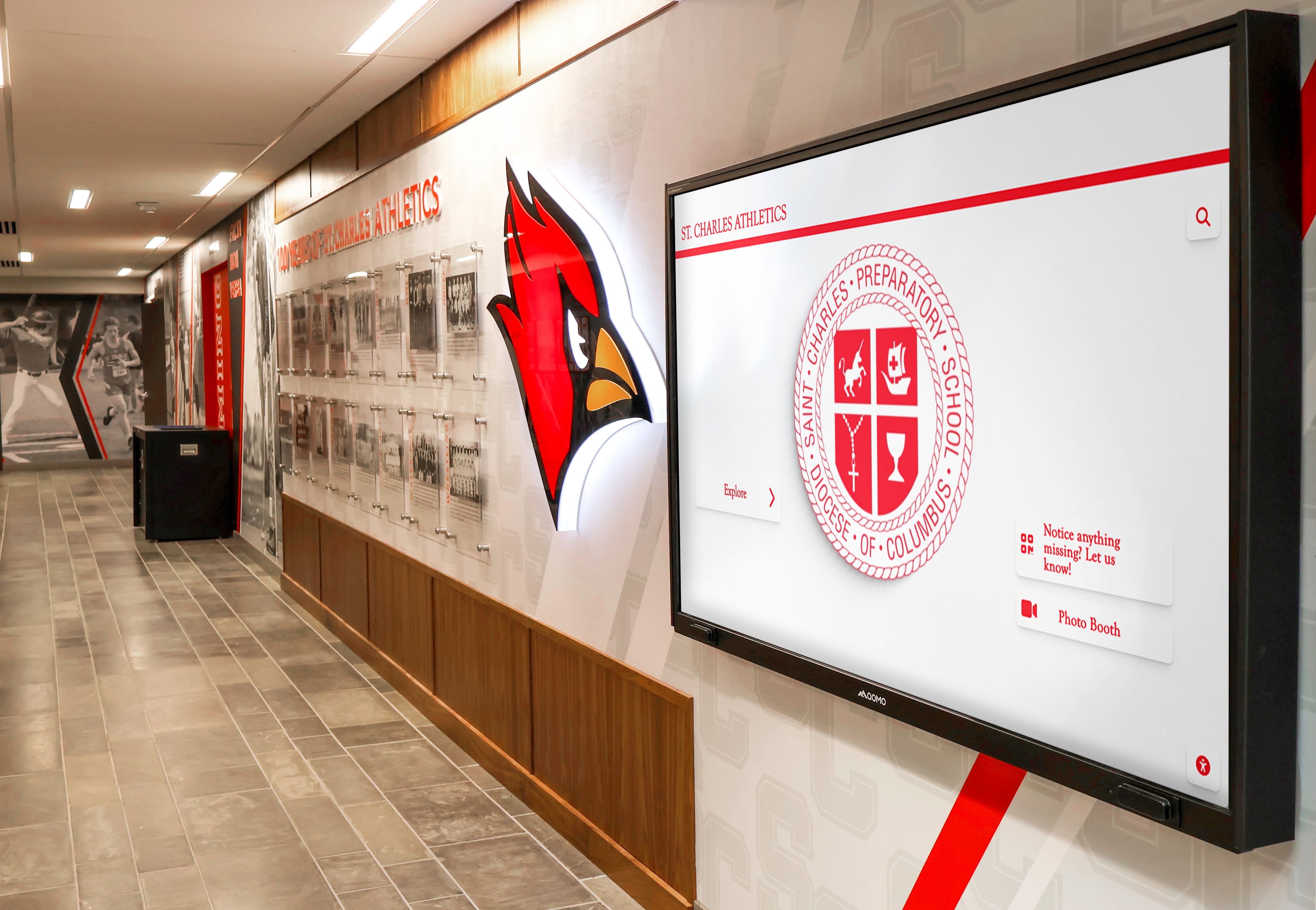
Selection Process Design:
Fair selection processes typically include nomination periods when community members can submit candidates, review committees representing diverse community constituencies examining nominations, evaluation against published criteria ensuring consistent standards, voting or consensus decision-making determining honorees, and public announcements celebrating selections while preserving nominee confidentiality when appropriate.
Selection committee composition matters significantly for maintaining program credibility. Diverse representation ensures all community segments receive fair consideration rather than overweighting specific groups or interests. Most effective committees include representatives from government, nonprofit organizations, business community, education institutions, diverse demographic groups, and past recognition recipients who understand honoree experiences.
Content Requirements and Information Architecture
Honors displays must balance comprehensive documentation with accessible, engaging presentation that doesn’t overwhelm viewers.
Essential Information Elements:
Effective recognition profiles typically include honoree name and recognition year, clear description of accomplishments warranting recognition, relevant dates and timeframes for achievements, photographs showing honorees (with permission), quotes from honorees or those who nominated them, and connections to broader community impact and values.
For digital displays, additional elements might include video tributes or interviews, photo galleries showing honorees in action, detailed biographical information and career histories, links to related achievements or other honorees, and social sharing capabilities enabling honorees to spread recognition through their networks.
Information architecture must serve both browsing and searching behaviors. Visitors who want to explore broadly benefit from featured honorees, recent additions, category filters, and randomized highlights showcasing different individuals. Those seeking specific individuals need robust search by name, year, category, keyword, or achievement type.
Many communities implementing digital recognition discover that content management becomes a significant consideration requiring systematic approaches documented in resources about managing digital recognition display content effectively over time.
Accessibility and Inclusion Considerations:
Universal design principles ensure honors displays serve all community members regardless of ability. Physical displays require appropriate mounting heights, clear typography with sufficient size and contrast, tactile elements for vision-impaired access when feasible, and wheelchair-accessible positioning.
Digital displays need screen reader compatibility for vision-impaired users, keyboard navigation alternatives to touch interaction, closed captions for video content, language options serving multilingual communities, and mobile responsiveness ensuring access from any device type.
Technology Selection for Digital Honors Displays
Communities considering digital honors displays face numerous technology decisions affecting long-term success.
Display Hardware Options:
Physical installations typically utilize commercial-grade touchscreen displays designed for continuous operation in public spaces. Hardware considerations include screen size (commonly 43" to 75" for wall-mounted installations), touch technology (capacitive touch offering smartphone-like responsiveness versus resistive touch), display orientation (portrait versus landscape based on content design), mounting approach (wall-mounted, kiosk enclosures, or freestanding), and environmental protection for outdoor or semi-exposed locations.
Commercial displays designed for digital signage applications typically cost more than consumer televisions but provide significantly longer operational life, brighter displays visible in ambient light, commercial warranties covering business use, and more robust construction for public access environments.
Organizations seeking detailed guidance on hardware selection benefit from comprehensive resources about computer modules for touchscreen kiosk applications explaining technical considerations and integration approaches.
Software Platform Requirements:
The software powering digital honors displays determines functionality, ease of use, and long-term maintenance requirements. Essential software capabilities include content management systems allowing non-technical staff to add and update honorees, responsive design working across device types and screen sizes, powerful search and filtering for finding specific individuals, multimedia support for photos and videos, robust database architecture handling growing recognition lists, and security features protecting content from unauthorized changes.
Software deployment options include cloud-based platforms accessible from any internet-connected device, locally-hosted systems running on dedicated hardware, or hybrid approaches combining local displays with cloud-based content management. Each approach offers distinct advantages regarding reliability, security, update convenience, and ongoing costs.

Integration and Data Management:
Digital honors displays rarely exist in isolation—they often need integration with existing community systems. Common integration needs include website embedding for online access, integration with nomination and selection systems, connections to donor databases for contribution recognition, links to social media for sharing capabilities, and data export options for reports and analysis.
Data management practices must address backup procedures preventing content loss, version control tracking changes over time, permissions management controlling who can modify content, archival strategies for long-term preservation, and migration paths ensuring content portability if platform changes become necessary.
Implementation Best Practices for Community Honors Displays
Converting planning into operational honors displays requires attention to installation, content development, launch activities, and ongoing management.
Physical Installation and Placement Strategies
Where honors displays are positioned significantly impacts visibility, engagement, and recognition effectiveness.
Location Selection Criteria:
Premium display locations include high-traffic areas where community members naturally gather, prominent positions creating visibility without seeking displays deliberately, appropriate dignity matching recognition significance, adequate lighting ensuring visibility throughout operating hours, accessibility for individuals with mobility limitations, and environmental conditions protecting displays from weather, vandalism, or excessive wear.
Common installation locations include city hall lobbies and main corridors, public library main entrances and reading areas, community center gathering spaces, school main entrances and common areas, public parks and recreational facilities, senior centers and activity rooms, and nonprofit organization headquarters serving broad community populations.
Multiple display locations can serve large or geographically dispersed communities. Identical content across multiple installations ensures equitable access regardless of which community facility residents frequent. Digital platforms make multi-location deployment practical through centralized content management updating all displays simultaneously.
Installation Technical Considerations:
Proper installation requires structural support adequate for display weight, electrical power with professional wiring to building standards, network connectivity for internet-based content, security measures preventing theft or vandalism, and climate control when necessary for equipment longevity.
Professional installation ensures displays meet building codes, accessibility standards, and safety requirements while providing clean, finished appearances befitting recognition significance. Communities should budget for professional installation rather than attempting do-it-yourself approaches that risk poor results or safety issues.
Content Development and Profile Creation
Rich, well-crafted recognition content creates emotional connection and inspires engagement with honors displays.
Profile Development Process:
Effective recognition profiles begin with systematic information gathering from nominees, selection committee documentation, public records, newspaper archives, and interviews with honorees or those who know them. This research phase builds comprehensive understanding of accomplishments and personal stories behind recognition.
Content creation then synthesizes research into engaging narratives focusing on specific achievements, community impact, personal qualities, challenges overcome, and inspiration offered to others. Strong profiles avoid generic praise in favor of specific stories illustrating why individuals earned recognition.
Photography and multimedia elements significantly enhance profile impact. High-quality portraits showing honorees, action photography capturing individuals engaged in recognized activities, video interviews allowing honorees to share experiences in their own voices, and archival photographs documenting historical achievements all create richer experiences than text-only profiles.
Many organizations implementing comprehensive recognition benefit from understanding storytelling approaches that make digital recognition compelling for diverse audiences.
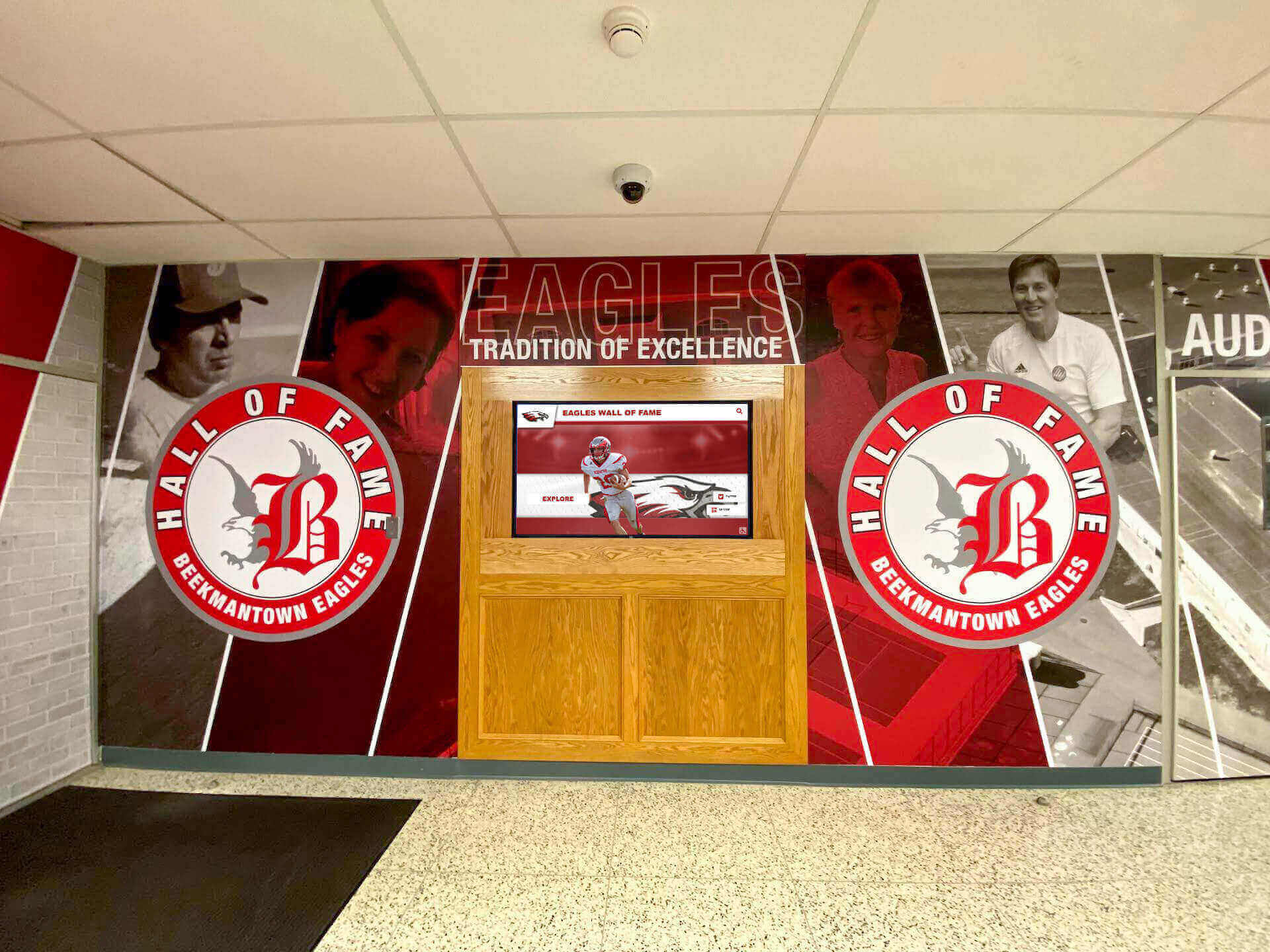
Content Quality Standards:
Maintaining consistent quality across all profiles ensures honors displays reflect the significance of recognition. Quality standards should address writing style and voice consistency, biographical accuracy through fact-checking, appropriate photograph resolution and composition, consistent information completeness across profiles, proper grammar and proofreading, and sensitivity regarding personal information privacy.
Content development workflows typically include draft creation by designated staff or volunteers, fact verification confirming biographical details, honoree review allowing individuals to suggest corrections, editorial review ensuring writing quality, and final approval by recognition committee or leadership before publication.
Launch Activities and Community Engagement
Successful honors display launches create community awareness while celebrating the recognition program itself.
Launch Event Planning:
Inaugural honors display unveilings work best as celebratory community events rather than simple installations. Effective launch events include remarks by community leaders about recognition program importance, introduction of initial honorees with brief spotlights on their achievements, honoree attendance when possible for personal congratulations, demonstration of display functionality for digital systems, media coverage generating awareness, and reception providing social time for community building.
Launch events serve multiple purposes beyond simple unveiling—they communicate that recognition matters to community leadership, they honor initial inductees creating emotional impact, they educate residents about how honors displays work, and they generate momentum for ongoing nomination and selection processes.
Ongoing Promotion and Awareness:
Honors displays require consistent promotion ensuring community awareness doesn’t fade after launch excitement. Effective promotion strategies include regular media features about newly added honorees, social media content highlighting specific profiles, integration into community event programming, inclusion in community orientation for new residents, and periodic special events celebrating recognition program milestones.
Educational outreach helps communities understand nomination processes, selection criteria, and how recognition serves community building. Many residents never consider nominating deserving individuals simply because they don’t know opportunities exist or understand how processes work.
Maintenance and Sustainability Planning
Long-term success requires addressing ongoing content updates, technical maintenance, and program evolution.
Content Management Responsibilities:
Sustainable honors displays need designated responsibility for content coordination, technical support, and program administration. Even excellent launch implementations gradually decay without consistent management addressing new honoree addition, profile updates as circumstances change, broken link repairs, and response to community inquiries.
Assignment of specific staff positions or committee members to honors display coordination prevents programs from becoming orphaned when enthusiastic champions move on. Documentation of procedures ensures knowledge transfer as coordinators change over time.
Technical Maintenance Requirements:
Digital displays require ongoing technical maintenance including software updates for security and functionality, hardware cleaning preventing display degradation, network troubleshooting resolving connectivity issues, backup verification ensuring content protection, and periodic technology refresh as equipment reaches end-of-life.
Maintenance contracts with technology providers can provide peace of mind through guaranteed response times, preventive maintenance visits, priority support access, and replacement equipment during repairs. While adding ongoing costs, professional maintenance often proves more cost-effective than dealing with extended downtime or attempting fixes without proper expertise.
Understanding how organizations provide white-glove support for digital recognition systems helps communities evaluate service level expectations and vendor capabilities.
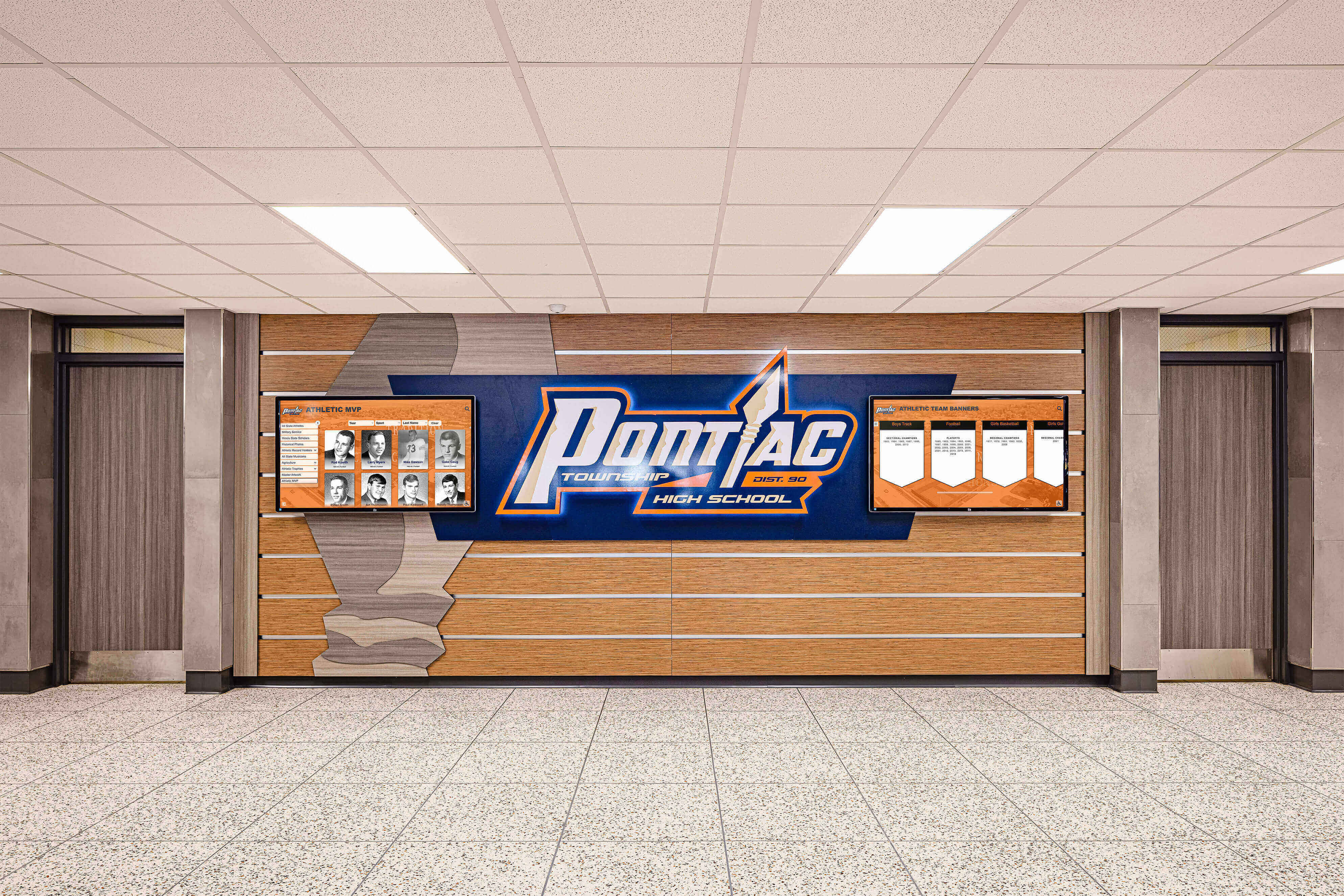
Program Evolution and Enhancement:
Recognition programs should evolve over time rather than remaining static. Periodic assessment through surveys, usage analytics, stakeholder feedback, and comparative research identifies enhancement opportunities improving effectiveness. Common evolution paths include expanding recognition categories as community needs emerge, adding multimedia content capabilities, improving search and navigation, creating companion mobile applications, integrating with other community platforms, and refreshing visual design maintaining contemporary appearance.
Regular program review on 3-5 year cycles provides opportunities to assess whether honors displays continue serving community needs effectively or require strategic adjustments ensuring ongoing relevance and impact.
Special Considerations for Different Community Settings
Different community contexts create unique opportunities and challenges requiring tailored approaches.
Municipal and Civic Organization Honors Displays
Government-based recognition serves entire populations requiring particular attention to inclusivity and accessibility.
Municipal honors displays often involve formal government processes including official selection through city councils or commissions, compliance with public meeting requirements, adherence to accessibility regulations, and permanent record-keeping following government documentation standards. These formal requirements add complexity but also provide legitimacy and sustainability through official governmental support.
Civic organization displays serving specific populations like chambers of commerce, service clubs, or special interest groups can operate with more flexibility while still requiring attention to inclusive recognition within their constituencies.
Educational Institution Honors Displays
Schools, colleges, and educational institutions represent common settings for community honors displays serving students, staff, alumni, and supporters.
Educational honors displays typically recognize diverse accomplishment categories including academic excellence and scholarship, athletic achievement across all sports, artistic and creative accomplishment, service and character demonstration, distinguished alumni achievement, educator and staff excellence, and supporter contribution through volunteering or donations.
The educational context creates unique opportunities for recognition serving learning objectives. Honors displays can provide role models inspiring current students, document institutional history across generations, strengthen school pride building community identity, support college recruitment showcasing tradition, and facilitate alumni engagement maintaining graduate connections.
Schools implementing comprehensive recognition often benefit from understanding approaches for student awards and recognition programs that acknowledge diverse talents and accomplishments beyond narrow achievement types.
Faith Community and Nonprofit Honors Displays
Religious institutions and nonprofit organizations balance recognition with values of service, humility, and mission focus.
Faith communities must navigate theological perspectives on recognition ensuring acknowledgment doesn’t conflict with teachings about humility, service motivation, or appropriate versus inappropriate pride. Thoughtful approaches celebrate contribution and model behavior while maintaining appropriate spiritual framing.
Nonprofit organizations with limited budgets need cost-effective recognition approaches maximizing impact despite resource constraints. Digital platforms often provide better value than expensive physical installations for organizations serving broad geographic areas or maintaining limited physical facilities.
Professional and Industry Association Honors Displays
Industry groups, professional associations, and trade organizations use honors displays recognizing excellence within specific fields.
Professional recognition might include career achievement and longevity, industry innovation and leadership, mentorship and profession advancement, service to professional associations, and contributions to professional knowledge through research or publication. These specialized honors displays serve narrower audiences but create significant impact within their professional communities.
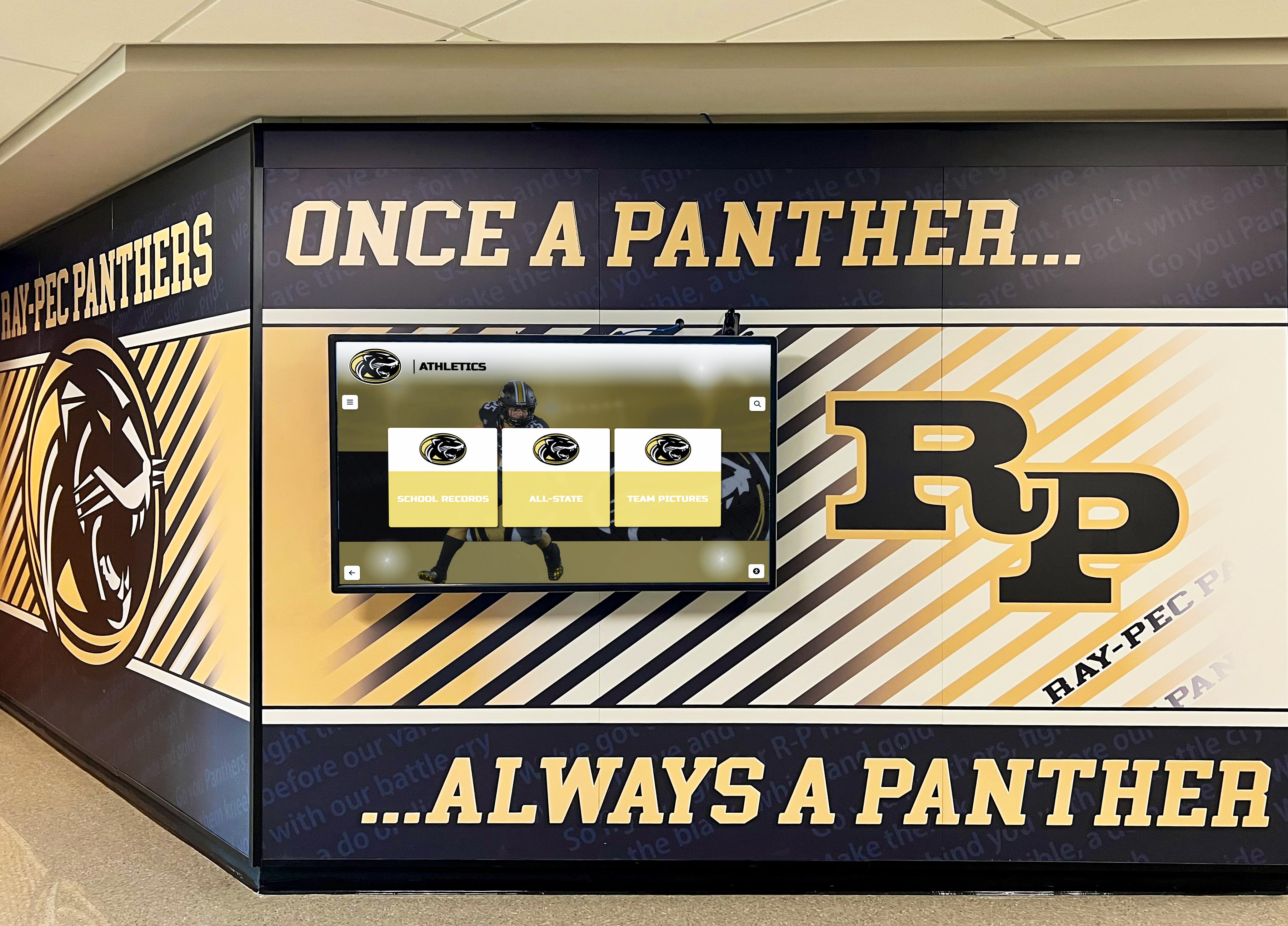
Measuring Community Honors Display Impact
Assessment ensures recognition programs create intended benefits while identifying improvement opportunities.
Quantitative Metrics and Analytics
Measurable data provides objective program evaluation. Key metrics include number of individuals recognized annually, demographic diversity of honorees, nomination volume and participation, display viewing or engagement analytics for digital systems, website traffic for online access, social media sharing and reach, event attendance for recognition ceremonies, and cost per honoree for budget efficiency assessment.
Digital platforms enable sophisticated analytics tracking search terms, popular profiles, visit duration, navigation patterns, and feature utilization. This behavioral data reveals how community members actually use honors displays versus how designers assumed they would.
Qualitative Assessment and Community Feedback
Beyond numbers, qualitative insights capture meaning and emotional impact. Valuable qualitative methods include honoree interviews about recognition experiences, community focus groups discussing program perceptions, stakeholder surveys assessing value and satisfaction, observation of honors display use in natural settings, and story collection illustrating how recognition influenced behavior or inspired contribution.
Qualitative assessment often reveals impacts metrics miss—a young person inspired to community service after seeing role models recognized, a family’s pride in grandparent’s honored legacy, or increased volunteer recruitment following recognition of existing volunteers.
Continuous Improvement Processes
Assessment should drive improvement rather than simply documenting status. Regular review cycles examine assessment data, identify issues or opportunities, develop enhancement strategies, implement changes, and reassess impact. This continuous improvement approach ensures honors displays evolve meeting changing community needs rather than remaining static programs losing relevance over time.
Future Trends in Community Honors Recognition
Recognition technology and practices continue evolving, creating new opportunities for community honors displays.
Emerging Technologies and Capabilities
Advanced technologies enable increasingly sophisticated recognition experiences. Artificial intelligence can power conversational interfaces allowing natural language questions about honorees. Augmented reality could overlay digital content on physical spaces through smartphone applications. Facial recognition might identify honorees in group photographs automatically. Voice interfaces could enable hands-free access supporting accessibility. And advanced analytics might identify recognition patterns revealing community priorities and values.
While cutting-edge technologies generate excitement, communities should evaluate capabilities based on actual needs rather than implementing technology for its own sake. The most appropriate solution balances innovation, practicality, cost-effectiveness, and genuine community benefit.
Integration and Ecosystem Approaches
Recognition increasingly connects across multiple platforms rather than existing in isolated systems. Modern approaches integrate honors displays with community websites, social media platforms, mobile applications, email communications, event management systems, donor databases, and other community technology. This ecosystem thinking creates seamless experiences where recognition appears consistently across all community touchpoints rather than only within standalone displays.
Solutions like Rocket Alumni Solutions provide comprehensive platforms supporting integrated recognition across physical displays, web access, mobile devices, and content management systems, enabling communities to implement sophisticated recognition programs without managing complex technical integrations themselves.
Personalization and Engagement Innovation
Future recognition systems will likely offer increasingly personalized experiences tailored to individual interests and connections. Visitors might see automatically highlighted honorees who attended their schools, lived in their neighborhoods, or contributed to causes they care about. Personalization creates more relevant experiences increasing engagement and emotional connection.
Interactive features might expand beyond basic search and browsing to include capabilities like virtual reality experiences visiting locations significant to honorees, timeline visualizations showing achievement chronology, relationship mapping showing connections between different honorees, and gamification elements encouraging exploration of complete honors display content.
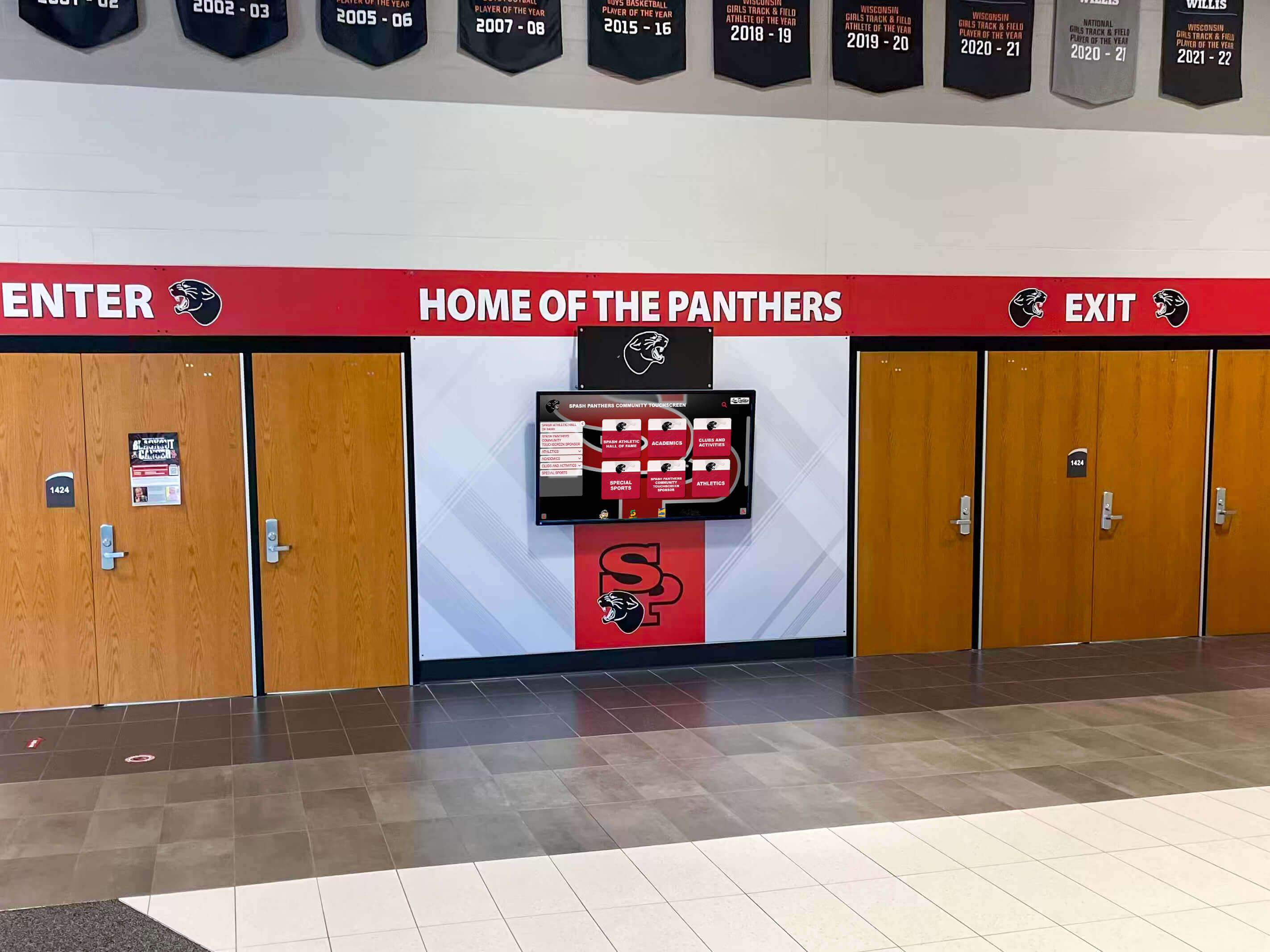
Conclusion: Building Community Through Meaningful Recognition
Community honors displays represent far more than lists of names on walls—they embody shared values, preserve collective memory, inspire continued excellence, and strengthen the social bonds that transform groups of individuals into true communities. When implemented thoughtfully with attention to inclusive criteria, accessible presentation, quality content, and sustainable management, honors displays become powerful tools for community building that create benefits far exceeding recognition costs.
The most successful community honors displays share common characteristics: they recognize diverse accomplishments ensuring broad inclusion, they utilize technology thoughtfully enhancing rather than complicating recognition, they maintain consistent quality across all honorees, they receive adequate resources enabling proper implementation, they integrate into broader community engagement strategies, and they evolve over time meeting changing community needs and taking advantage of improving capabilities.
Key Principles for Effective Community Honors Displays:
- Establish clear, inclusive recognition criteria aligned with community values
- Design for accessibility ensuring all community members can engage
- Balance traditional physical presence with digital accessibility and capacity
- Create rich, specific content that tells stories rather than listing facts
- Provide robust search and browsing capabilities serving different user needs
- Plan for sustainable long-term management beyond initial implementation
- Promote displays consistently ensuring community awareness
- Assess impact regularly and implement continuous improvements
- Integrate with broader community engagement and communications
- Celebrate the recognition program itself reinforcing its importance
Communities ready to implement or enhance honors displays will find that modern technology has made sophisticated recognition programs more accessible than ever to organizations of all sizes and resource levels. Digital platforms provide capabilities once available only through expensive custom development, while cloud-based solutions eliminate complex technical infrastructure requirements that previously deterred many communities.
Whether your community is just beginning to consider formal recognition programs or seeking to modernize existing honors displays, the strategic investment in celebrating community achievement delivers returns that compound over time—stronger civic engagement, enhanced community pride, preserved institutional memory, and inspiration for future generations who will become tomorrow’s honored contributors.
Ready to create a community honors display that celebrates your local heroes and strengthens your community bonds? Modern digital recognition solutions like Rocket Alumni Solutions provide comprehensive platforms designed specifically for community recognition programs, combining powerful functionality with ease of use that makes sophisticated honors displays accessible to communities of any size.




































